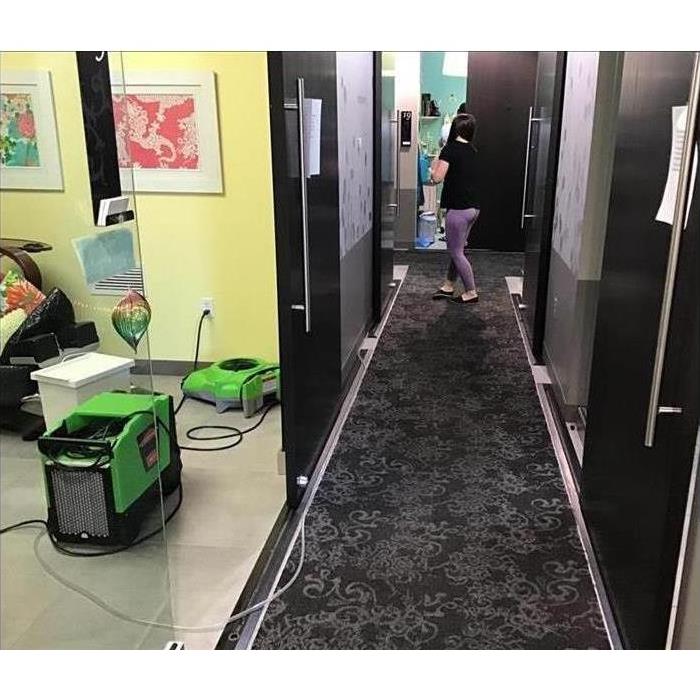How To Remove Odors After a Flood
3/7/2022 (Permalink)
 SERVPRO of Oldsmar/Westchase was quick to the scene after a rain storm flooded this local salon. When water finds a way inside, call us!
SERVPRO of Oldsmar/Westchase was quick to the scene after a rain storm flooded this local salon. When water finds a way inside, call us!
How To Get Rid Of Flood Odors
Even after the flood water has receded in Westchase, FL, it can leave its legacy behind. One of these legacies is a litany of foul odors, which can indicate anything from mold growth to sewage loss left behind in the building. When cleaning and restoring after flood damage, odor elimination is one of your top priorities.
1. Dry Everything Thoroughly
Your first step in preventing odors is to dry everything as thoroughly as possible, as quickly as possible, before standing water has time to set and seep into any porous surfaces. Drain standing water as best you can by using vacuum suction if you need to. Mop and blot every surface. Open all windows and doors to let air in to further dry out, and use fans to hasten the process. Water left behind can lead rapidly to mold growth and should be addressed quickly.
2. Remove Anything That Might Hold Odors
Unfortunately, some of your possessions and inventory will have to go. Fabric, carpets, and other items may hold odors that are impossible to get out of porous surfaces without particular types of deep chemical or steam cleaning. Even if you intend to have them cleaned, remove them from the premises during initial cleanup before the odors start to set.
3. Make Use of Disinfectant and Odor Absorbers
Disinfectant is your friend in preventing mold growth. Every surface you mop dry should also be thoroughly disinfected. Odors can hang in the air, however, and can cling to surfaces. Believe it or not, kitty litter is a great odor absorber to spread over surfaces. You can also buy chemical odor absorbers and special steam cleaning and humidifier devices specially intended to remove odors from the air and open surfaces.
4. Hire Professionals
If those pesky odors still won’t abate, you may have to bring in professionals. Professional storm restoration and flood water damage cleaners often have commercial equipment not readily available to most homeowners and business owners, and they are licensed to handle more hazardous but effective chemical cleaners.




 24/7 Emergency Service
24/7 Emergency Service